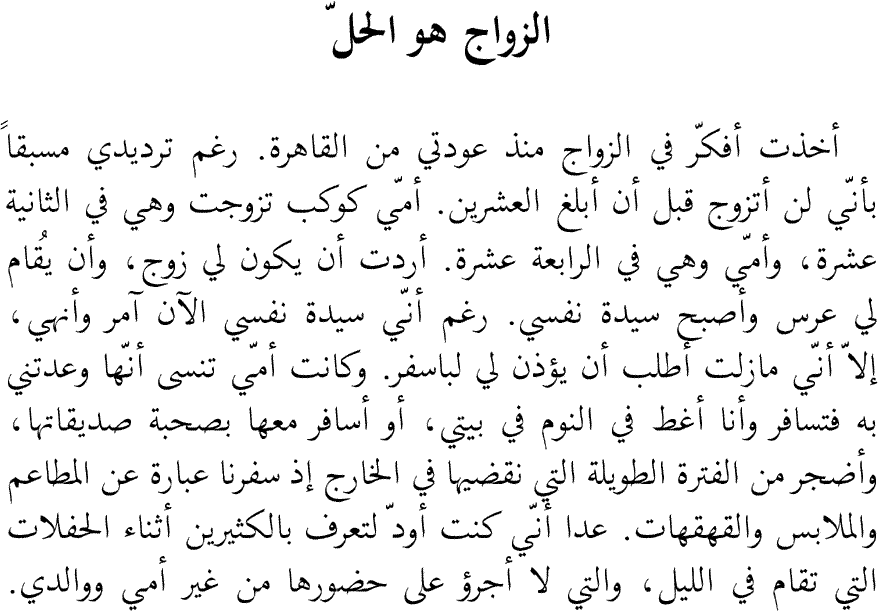| These pages are written in ASCII encoding |
More than for other languages, the computer has done a lot of damage to typography in Arabic countries. Because, by nature, Arabic script is complex and needs tools for placing glyphs horizontally and vertically. More than in any other script, there is a tremendous difference between Arabic typed on a typewriter and typeset typographically, either by leaden types or Monotype/Linotype machines. The computer can be considered as an extension of the typewriter, which has resulted in a esthetic loss for the Arabic printed document.
Our motto being the preservation of traditional typography using the latest technologies, we have developped typesetting systems for Arabic, which produce results optically similar to those of Arabic Monotype typesetting. In the figure below we see and example of such typesetting: (for more detail see the corresponding PDF Acrobat file)

These typefaces, the authentic Monotype Naskhi, offer several hundreds esthetic ligatures.
Our system is unique in offering total control of contextual analysis. What do we mean by this?
Contextual analysis is the process by which Arabic letters take different forms according
to their position in the word, and according to the surrounding letters. For example,
in the word ![]() the letter qaph is initial, the sad medial, the rah final and the hah isolated.
the letter qaph is initial, the sad medial, the rah final and the hah isolated.
What makes contextual analysis more difficult is the presence of vowels and other diacritics which are placed upon or under the letters. To make the process of contextual analysis quicker, the various operating systems have integrated it in their lower strata, so that it is independent of the software being used. This integration has a sad consequence: the end user cannot interfere and change the rules of contextual analysis. So, for example, it is impossible to add a letter because this letter would have to interact contextually with the existing ones, and this would mean a modification of the established rules of contextual analysis (while in some other script you just need to draw a character in a font and can immediately start using it).
Our system applies contextual analysis independantly of the underlying operating system.
Anytime we can change the contextual rules, weither we want to add letters or diacritical marks
or to change the contextual behaviour of existing letters. So, for example, it was straightforward
to add new characters like the sheen with upper and lower dots ![]() used in Maghrebi manuscripts, or the dotless fah
used in Maghrebi manuscripts, or the dotless fah
![]() used in critical editions of early non-pointed Arabic texts.
used in critical editions of early non-pointed Arabic texts.
See also a sample of our work: a critical edition of comments on Aristoteles' Book of Categories by Averroes.